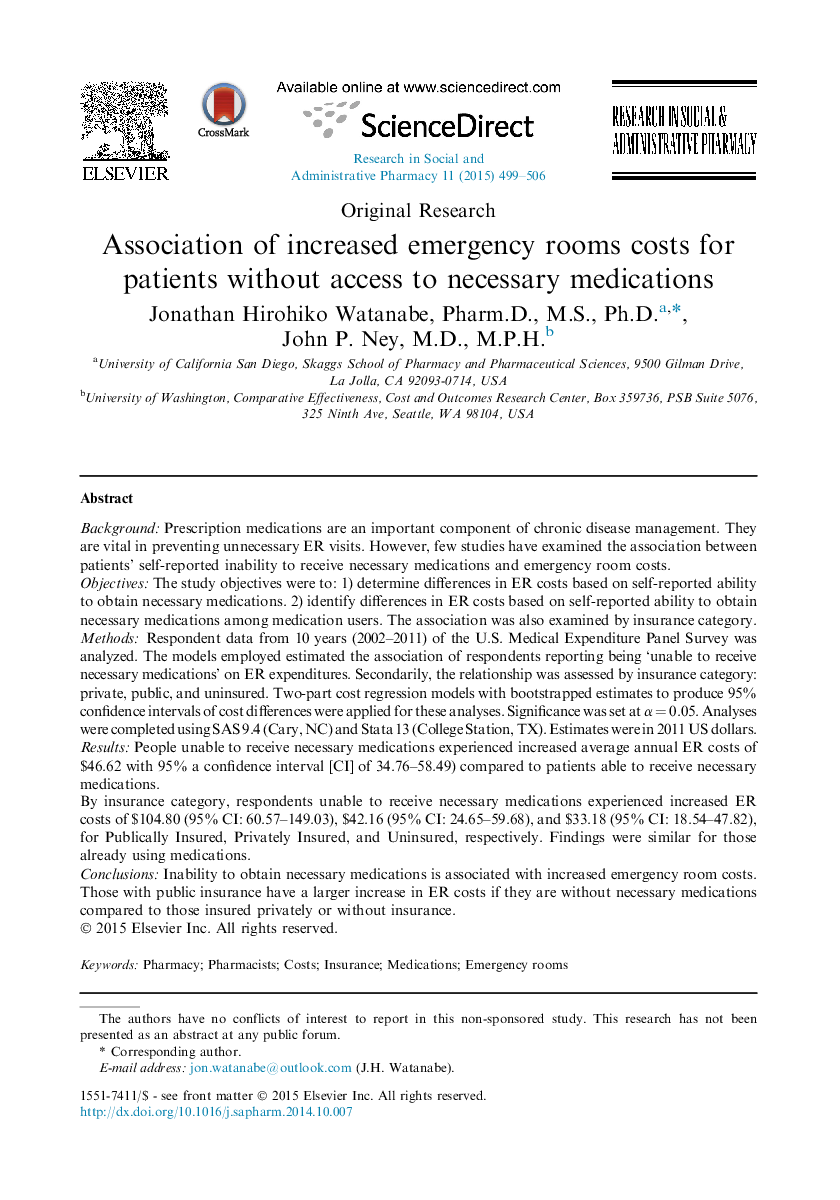| Article ID | Journal | Published Year | Pages | File Type |
|---|---|---|---|---|
| 2508342 | Research in Social and Administrative Pharmacy | 2015 | 8 Pages |
BackgroundPrescription medications are an important component of chronic disease management. They are vital in preventing unnecessary ER visits. However, few studies have examined the association between patients' self-reported inability to receive necessary medications and emergency room costs.ObjectivesThe study objectives were to: 1) determine differences in ER costs based on self-reported ability to obtain necessary medications. 2) identify differences in ER costs based on self-reported ability to obtain necessary medications among medication users. The association was also examined by insurance category.MethodsRespondent data from 10 years (2002–2011) of the U.S. Medical Expenditure Panel Survey was analyzed. The models employed estimated the association of respondents reporting being ‘unable to receive necessary medications’ on ER expenditures. Secondarily, the relationship was assessed by insurance category: private, public, and uninsured. Two-part cost regression models with bootstrapped estimates to produce 95% confidence intervals of cost differences were applied for these analyses. Significance was set at α = 0.05. Analyses were completed using SAS 9.4 (Cary, NC) and Stata 13 (College Station, TX). Estimates were in 2011 US dollars.ResultsPeople unable to receive necessary medications experienced increased average annual ER costs of $46.62 with 95% a confidence interval [CI] of 34.76–58.49) compared to patients able to receive necessary medications.By insurance category, respondents unable to receive necessary medications experienced increased ER costs of $104.80 (95% CI: 60.57–149.03), $42.16 (95% CI: 24.65–59.68), and $33.18 (95% CI: 18.54–47.82), for Publically Insured, Privately Insured, and Uninsured, respectively. Findings were similar for those already using medications.ConclusionsInability to obtain necessary medications is associated with increased emergency room costs. Those with public insurance have a larger increase in ER costs if they are without necessary medications compared to those insured privately or without insurance.
